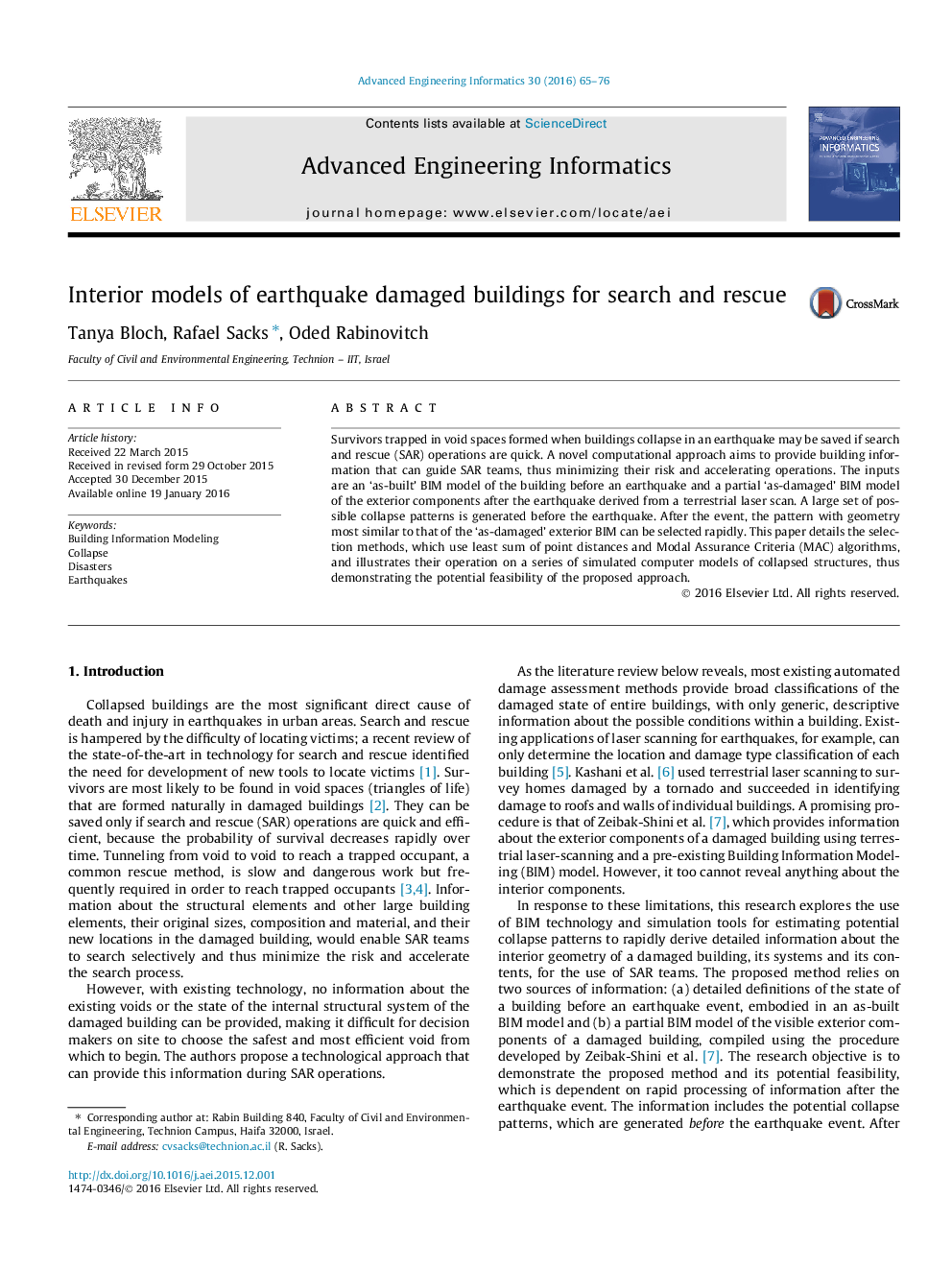| کد مقاله | کد نشریه | سال انتشار | مقاله انگلیسی | نسخه تمام متن |
|---|---|---|---|---|
| 241920 | 501788 | 2016 | 12 صفحه PDF | دانلود رایگان |
• Search and rescue (SAR) operations in buildings after an earthquake must be quick.
• A novel computational approach provides a building information model to aid SAR teams.
• Many collapse candidate models are generated before the quake from an as-built BIM.
• The ‘best-fit’ model is matched after the quake using terrestrial laser scanning.
• Feasibility has been demonstrated using Modal Assurance Criteria (MAC) algorithms.
Survivors trapped in void spaces formed when buildings collapse in an earthquake may be saved if search and rescue (SAR) operations are quick. A novel computational approach aims to provide building information that can guide SAR teams, thus minimizing their risk and accelerating operations. The inputs are an ‘as-built’ BIM model of the building before an earthquake and a partial ‘as-damaged’ BIM model of the exterior components after the earthquake derived from a terrestrial laser scan. A large set of possible collapse patterns is generated before the earthquake. After the event, the pattern with geometry most similar to that of the ‘as-damaged’ exterior BIM can be selected rapidly. This paper details the selection methods, which use least sum of point distances and Modal Assurance Criteria (MAC) algorithms, and illustrates their operation on a series of simulated computer models of collapsed structures, thus demonstrating the potential feasibility of the proposed approach.
Journal: Advanced Engineering Informatics - Volume 30, Issue 1, January 2016, Pages 65–76
